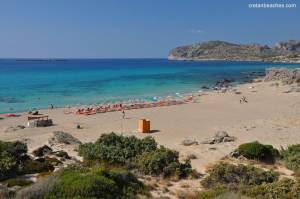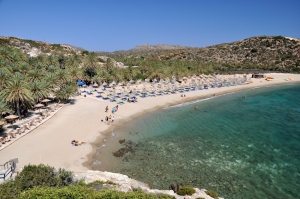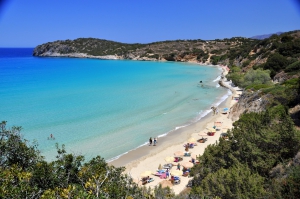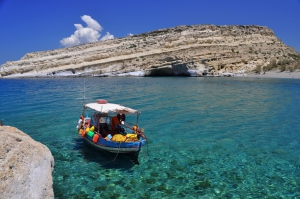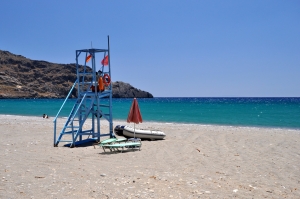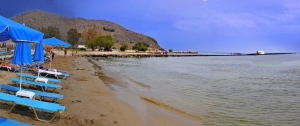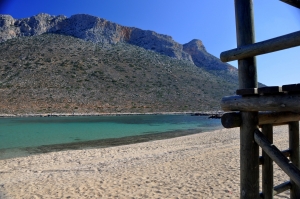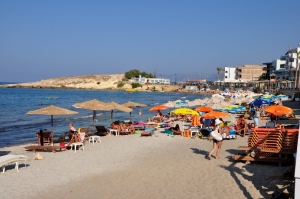The exotic beach of Falassarna is located 59km west of Chania and 17km west of Kissamos. It’s located in the western part of Cape Gramvousa. At the northern end of the beach are the ruins of the ancient Roman city of Falassarna.
Vai was totally unknown until the early 1970s, when a popular commercial for the Bounty chocolate with coconut was filmed here, using the magical background of palm trees. In the advert, coconuts were falling from trees, however Vai palms produce dates. Consequently coconuts had to be falsely hung to create the right impression. The ad made this unknown earthly paradise renowned throughout the world.
In front of the touristic settlement, there is a nice sandy beach with turquoise waters. The sea surface is mainly flat because the beach has an easterly orientation. while winds in Crete come mainly from the west. The beach is organized with umbrellas, sunbeds, and water sports.
Matala is famous for the carved caves in the rocks and the hippies of the ‘70s. It is located close to Phaestus, the second-largest palace of the Minoan civilization. Matala was the port of Phaestus, and in the Roman Times, it became a port of Gortys.
Plakias is a popular tourist resort, located 36km south of Rethymno city, at the exit of a fertile valley surrounded by high mountains and dense olive groves. Next to it empties the river Kotsifos.
Georgioupolis is a seaside resort located 38km east of Chania and 21km west of Rethymnon. It is a small coastal town, situated in a lush valley filled with rivers and springs. The town lies on the western edge of a vast long beach with 10km length. Georgioupolis Beach stretches 2km to the east, starting from the river Almiros and ending in Kavros Beach, which is a natural extension of the first beach.
Stavros (i.e. cross) is a seaside village located 17km northeast of Chania, at the northernmost edge of Cape Akrotiri. One characteristic feature of the area is the very steep camel-shaped mountain rising opposite the harbor of Stavros. The mountain is famous because there were filmed scenes for the film “Zorba the Greek”, where Anthony Quinn danced the famous Sirtaki Dance in 1964. Then Stavros was a small fishing village.
The first beach you come across east of the port of Hersonissos is a long sandy narrow beach, which is flooded by thousands of people. It is very well organized and close to the amenities of the city. However, it is inappropriate for those who do not like crowds.












